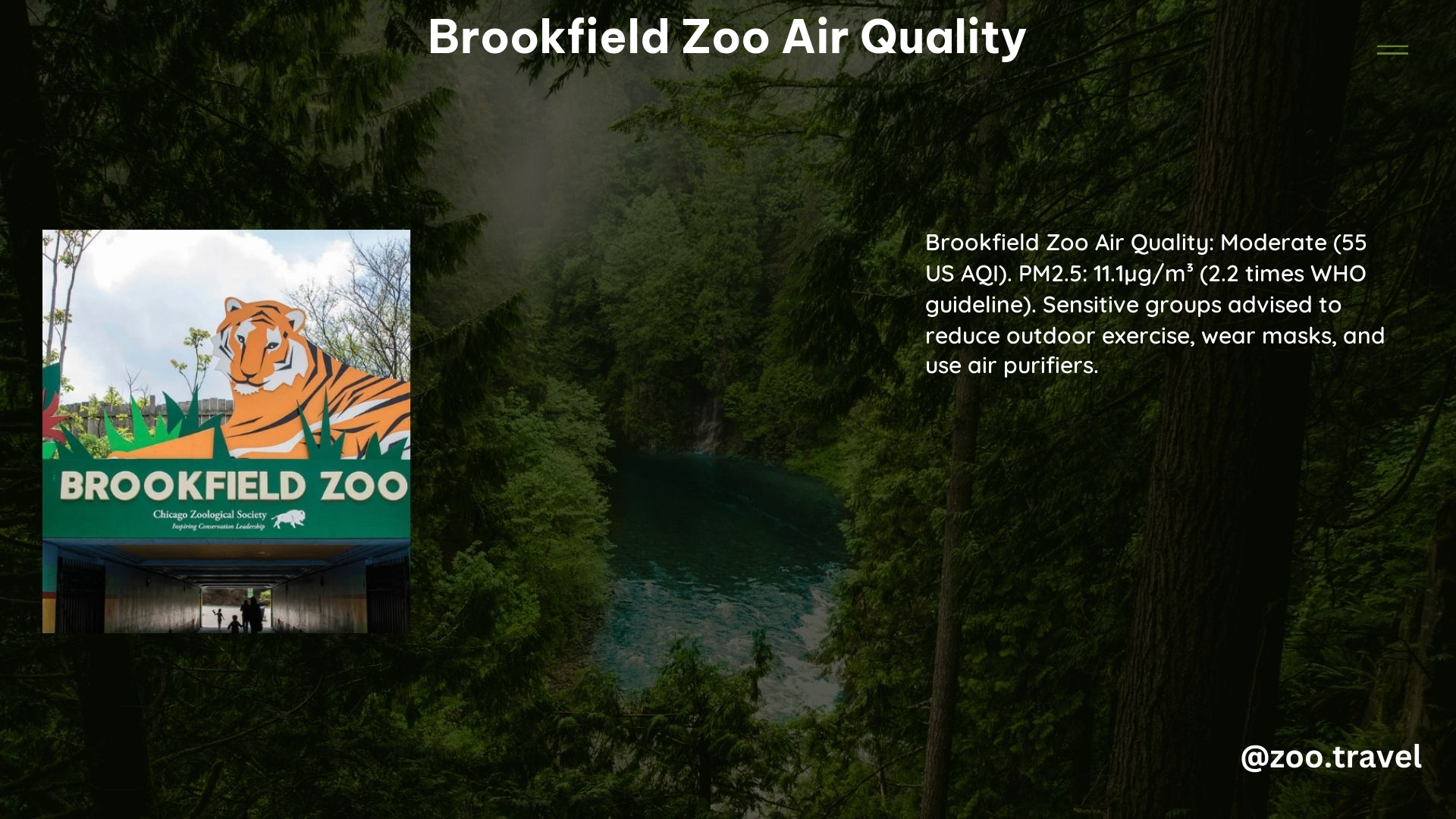The Brookfield Zoo, a renowned wildlife sanctuary located in Illinois, is a popular destination for nature enthusiasts and families alike. However, the quality of the air within the zoo’s premises is a crucial factor that can significantly impact the well-being of both the animals and the visitors. In this comprehensive blog post, we will delve into the current air quality status at the Brookfield Zoo, explore the primary pollutants and their concentrations, and discuss the potential implications for the zoo’s inhabitants and guests.
Current Air Quality Index (AQI) at Brookfield Zoo
The current Air Quality Index (AQI) at the Brookfield Zoo is classified as Moderate, with a PM2.5 concentration of 11.1 µg/m³. This value is 2.2 times higher than the World Health Organization’s (WHO) annual air quality guideline value, indicating a need for closer monitoring and potential mitigation strategies.
Primary Pollutants and Concentrations

The air quality at the Brookfield Zoo is influenced by a variety of pollutants, each with its own concentration levels. Let’s take a closer look at the primary pollutants and their current status:
| Pollutant | Concentration | Air Quality Category |
|---|---|---|
| Ozone (O3) | 49 µg/m³ | Good |
| Carbon Monoxide (CO) | 200 µg/m³ | Good |
| Nitrogen Dioxide (NO2) | 8.71 µg/m³ | Good |
| Particulate Matter (PM10) | 6.2 µg/m³ | Good |
| Particulate Matter (PM2.5) | 11.1 µg/m³ | Moderate |
| Sulfur Dioxide (SO2) | 1.54 µg/m³ | Good |
The data reveals that the primary concern is the elevated levels of Particulate Matter (PM2.5), which falls within the Moderate air quality category. This pollutant can pose significant health risks, particularly for sensitive individuals and those with pre-existing respiratory conditions.
Impact on Animals and Visitors
The air quality at the Brookfield Zoo can have a profound impact on both the animals and the visitors who frequent the facility.
Health Risks
High levels of PM2.5 can cause respiratory issues, such as coughing, wheezing, and difficulty breathing, for both animals and visitors. Additionally, the reduced visibility caused by poor air quality can affect the overall experience and enjoyment of the zoo.
Sensitive Groups
Individuals with pre-existing conditions, such as asthma, COPD, or cardiovascular disease, as well as sensitive groups like children and the elderly, are at a higher risk of experiencing adverse health effects due to the Moderate air quality. These individuals should consider reducing outdoor exercise, wearing protective masks, and using air purifiers to mitigate the impact.
Animal Welfare
The air quality can also have a significant impact on the well-being of the animals housed at the Brookfield Zoo. Certain species, particularly those with respiratory issues, may require additional care and monitoring to ensure their health and comfort. Zoo staff must be vigilant in monitoring the animals’ responses to the air quality and take appropriate measures to safeguard their welfare.
Additional Information
Pollen Count
In addition to the air quality data, it’s important to consider the current pollen levels at the Brookfield Zoo. The pollen count is as follows:
- Tree Pollen: None
- Grass Pollen: Low
- Weed Pollen: None
This information can be useful for visitors with allergies or sensitivities to certain types of pollen.
UV Index
The current UV index at the Brookfield Zoo is very high, indicating a significant risk of harm from unprotected sun exposure. Visitors should take appropriate precautions, such as wearing sunscreen, hats, and protective clothing, to avoid the harmful effects of UV radiation.
Conclusion
The air quality at the Brookfield Zoo is a crucial factor that must be closely monitored and addressed to ensure the well-being of both the animals and the visitors. The current Moderate AQI, driven primarily by elevated PM2.5 levels, highlights the need for proactive measures to mitigate the potential health risks and enhance the overall experience at the zoo.
By understanding the current air quality status, the primary pollutants, and their potential impacts, the Brookfield Zoo can implement targeted strategies to improve the air quality, protect the animals, and provide a safer and more enjoyable environment for its guests. Continuous monitoring, collaboration with environmental agencies, and the implementation of effective air quality management plans will be essential in maintaining the Brookfield Zoo as a premier destination for nature enthusiasts and families alike.
References
- https://weather.com/forecast/air-quality/l/Brookfield%2BIL?canonicalCityId=b020609129cf1fa642dcecffcb633d9ab3500920b59d8b37dbc03ac968fb79a7
- https://www.wunderground.com/health/us/il/brookfield/60513
- https://www.iqair.com/us/usa/illinois/brookfield
